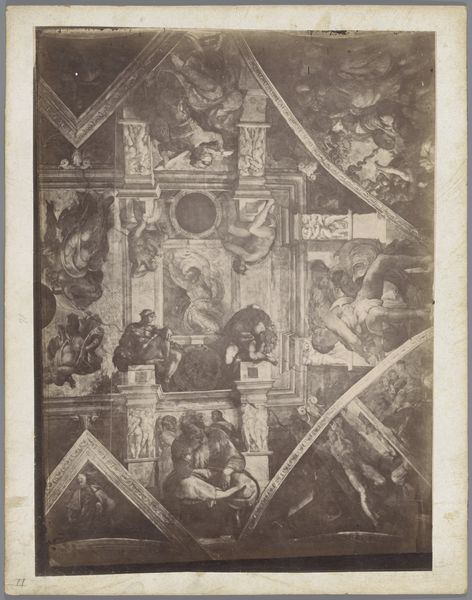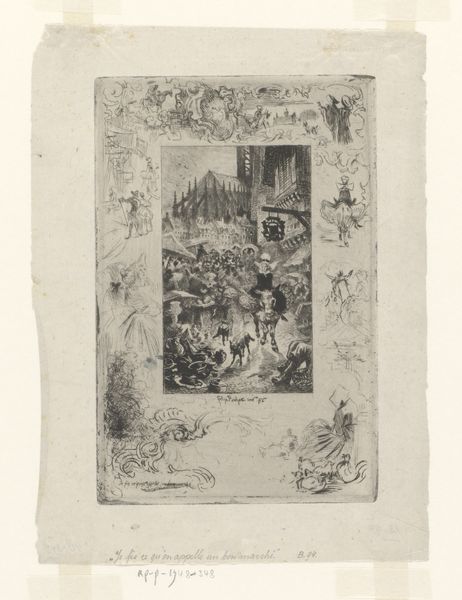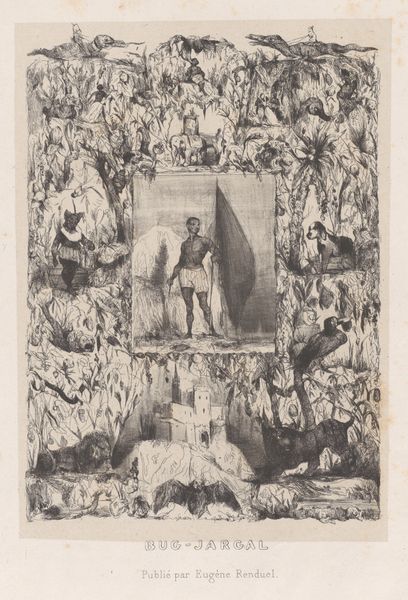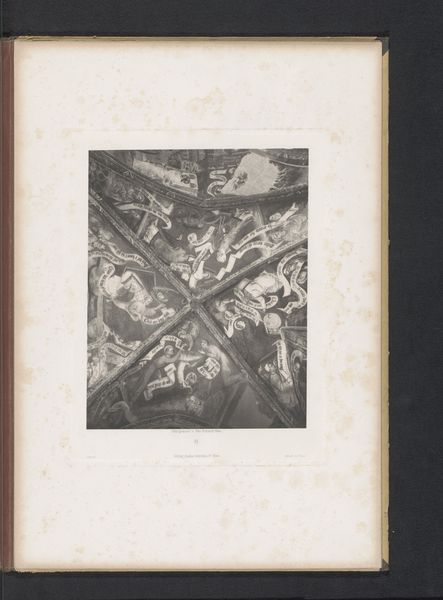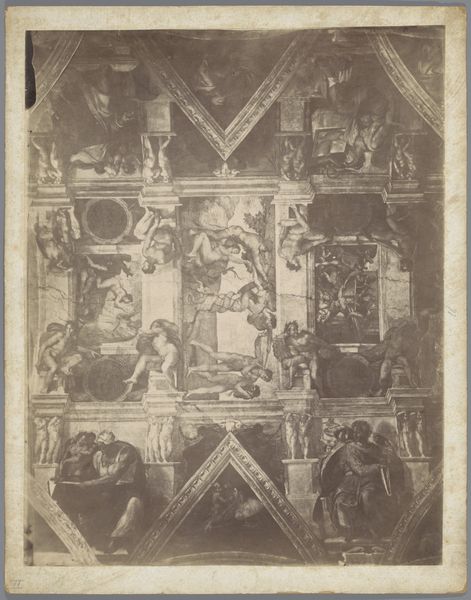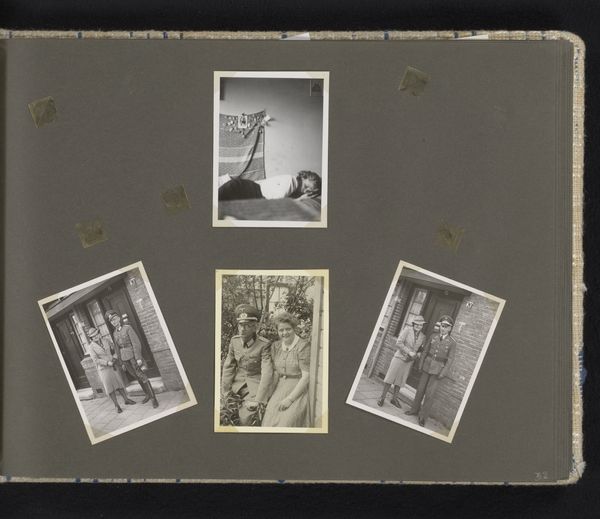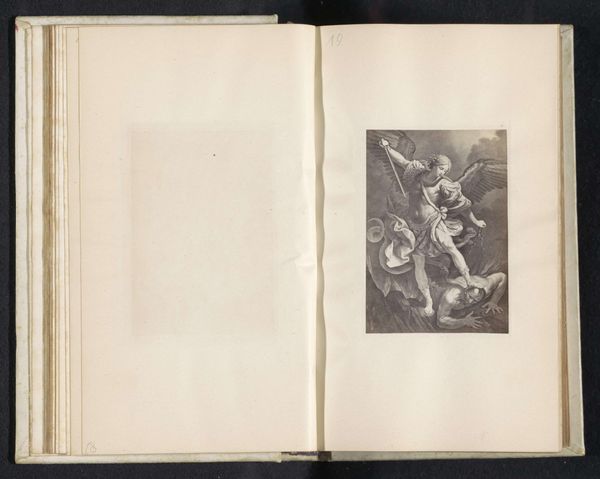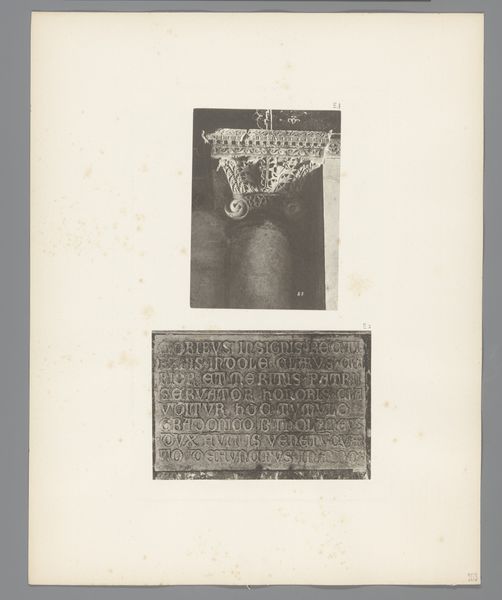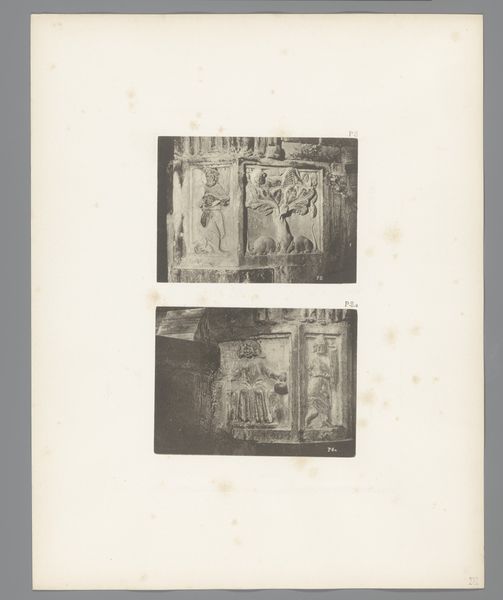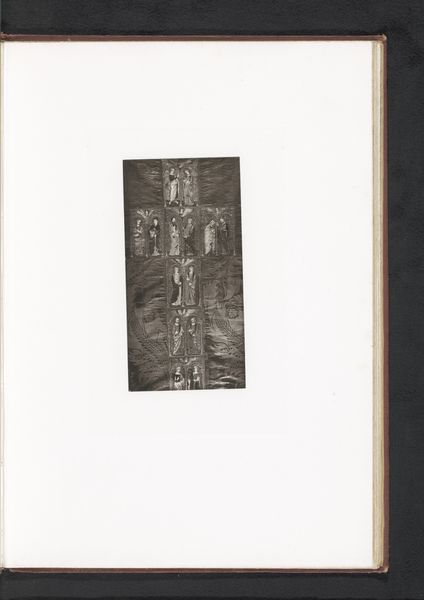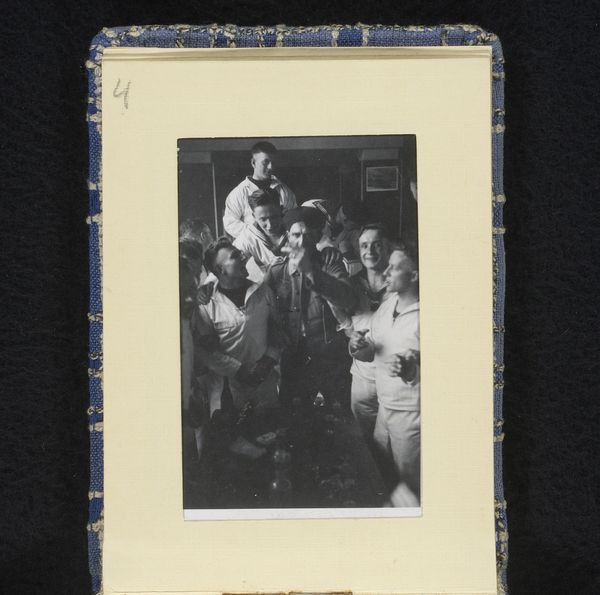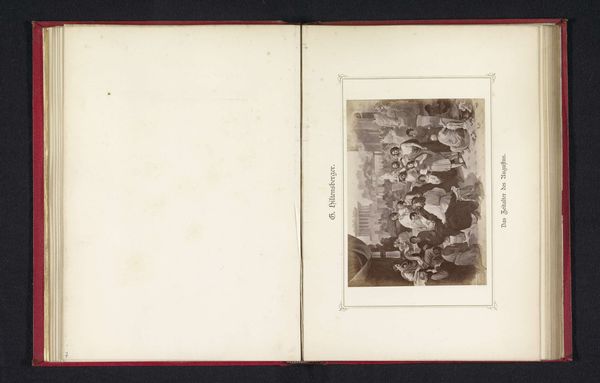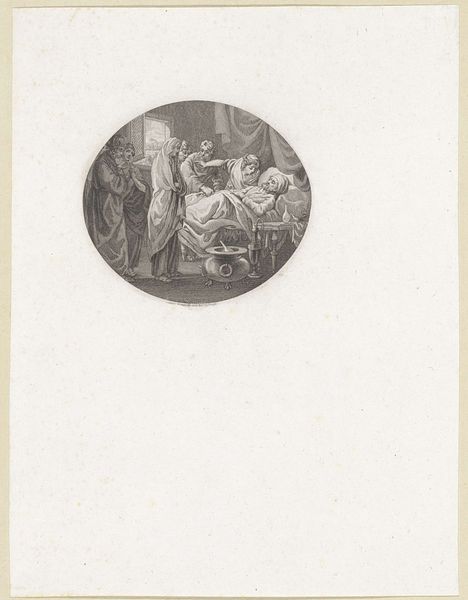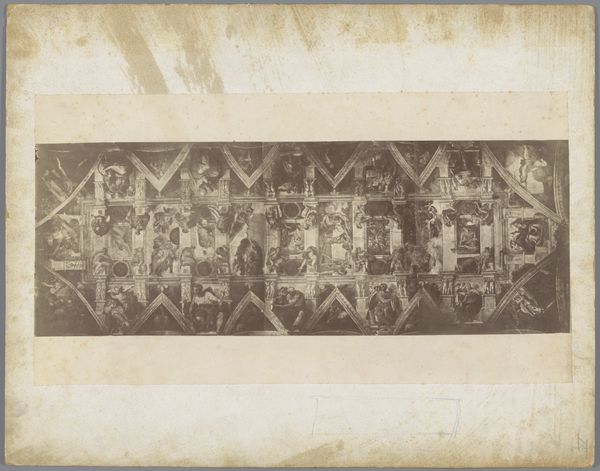
Compositie van prenten en een vel tekst met het adres van de fotograaf c. 1860 - 1871
0:00
0:00
lithograph, print, photography, collotype
#
lithograph
# print
#
photography
#
collotype
Dimensions: height 92 mm, width 58 mm
Copyright: Rijks Museum: Open Domain
Curator: It feels like peering into someone’s chaotic memory, a tumble of half-remembered stories and faces. A beautifully unsettling visual cacophony. Editor: Indeed. We’re looking at "Compositie van prenten en een vel tekst met het adres van de fotograaf," roughly translating to "Composition of Prints and a Sheet of Text with the Photographer's Address." It’s from somewhere around 1860 to 1871 and thought to be by Jules Raudnitz, who was, among other things, a photographic printer. Curator: Printer, huh? Well, it certainly shouts its medium loud and clear! It’s a jumble of collotype, lithograph, and photographic images layered together, seemingly without rhyme or reason. Except… is that the point? To showcase the breadth? Editor: Possibly. My take is, in the context of burgeoning photography and its self-definition, works like this operate as a form of advertisement and also a bid to be considered “art.” Raudnitz is not just selling photographs; he's selling visual culture itself. Curator: Ooh, “selling visual culture” - I like the sound of that! Like he's throwing it all against the wall and seeing what sticks with the viewer. And those classical paintings wedged in amongst portraits and street scenes! It feels almost… impudent. Editor: Exactly! And strategically brilliant, in my opinion. By juxtaposing high and low art, he democratizes image consumption, appealing to a broader clientele. Imagine browsing this like an old Instagram feed! Curator: But the way they are stacked together! There’s no space to breathe! What am I even supposed to be looking at? Editor: That’s where its real artistry lies, maybe. The overall composition suggests how a mass audience comes to know what’s valuable to see or consume, guided by commerce as much as culture. Curator: It still makes my eye twitch a little! I think, maybe it’s less that these are *supposed* to be understood, and more like the beginning of being constantly over-stimulated. So much noise in such a tiny format! It almost feels right for today. Editor: Maybe Raudnitz foresaw the age of the algorithm, packaging curated chaos for our consumption. I'm fascinated by how such historical items gain fresh, contemporary resonance. Curator: I agree. It makes me think of walking down a crowded street or surfing the Internet today. Editor: Exactly. This visual density speaks volumes, doesn't it? Curator: It truly does! A memento mori for a new era.
Comments
No comments
Be the first to comment and join the conversation on the ultimate creative platform.
